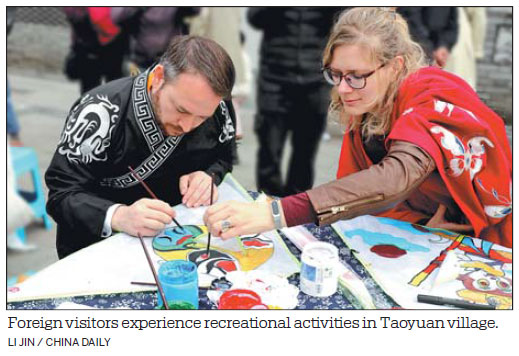Planting plums produces plump profits for industrious farmers
Taoyuan village in Tongxiang, where plum trees have been planted for some 2,500 years, has become an iconic destination for visitors to appreciate the charm of plum flowers and fruit.
It is believed that the plum trees have a close relationship with Xishi, one of the famous "Four Beauties" of ancient China. Local people said Xishi would often visit plum gardens to breathe their sweet fragrance.
In March and April, the village's plum flowers in full bloom attract visitors from around China.

Zhang Wei, an official at Taoyuan village, said almost all households in Taoyuan plant plum trees.
"The plum industry is a major business in Taoyuan village, and most of the farmers earn a living by planting plums," Zhang said.
The village has an advantage in planting plum trees because of its sound environment, she added.
"In recent years, we have committed to building the plum brand through promotional activities."
In 2011, the village launched the annual plum cultural festival, which included several activities such as baking competitions, pickled plum fruit platter making, plum trees planting and drawing competitions. The festival takes place from March to mid-July every year.
The event opens with the blossoming of plum flowers and closes when the plums ripen.
This year, the Tongxiang government has joined hands with the village to support the festival, upgrading it by adding in new activities including outdoor photography courses and plum poetry performances.
Growing plums is a profitable industry, and locals are flocking to the industry, Zhang said.
Li Yingfang, a 65-year-old local villager who has more than 40 years of experience in planting plum trees, said Taoyuan's plums are better than others, because of their superior taste and appearance.
Li said the plums can be priced at about 80 ($11.93) to 100 yuan per kilogram and the annual fruit ripening will bring in a revenue of 40,000 yuan for a family.
"Apart from selling plums, we also strive to explore more methods to develop the plum industry, for instance, supporting the juice and wine production," Li said.
Official data show that Taoyuan village has more than 113.33 hectares of plums trees, which can generate more than 17 million yuan from its annual output. Villagers' average annual per capita disposable income has grown to more than 25,000 yuan in recent years.
(China Daily 04/17/2019 page7)














